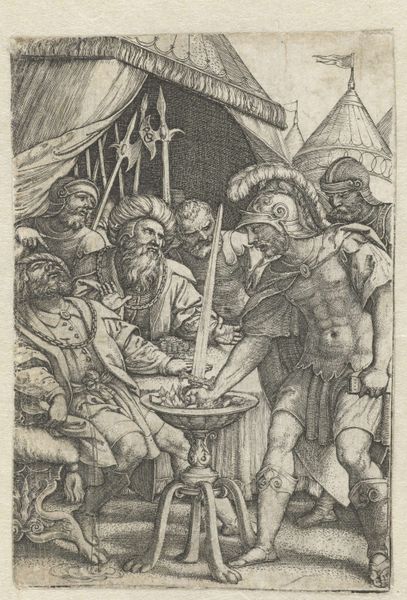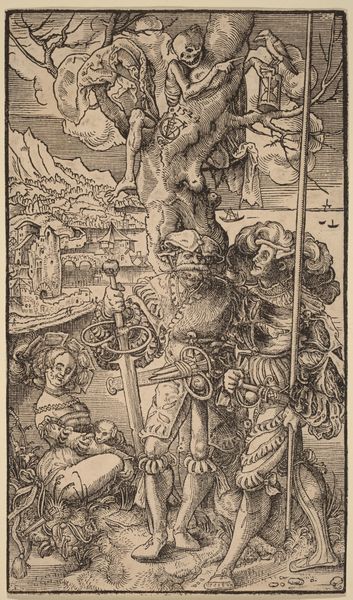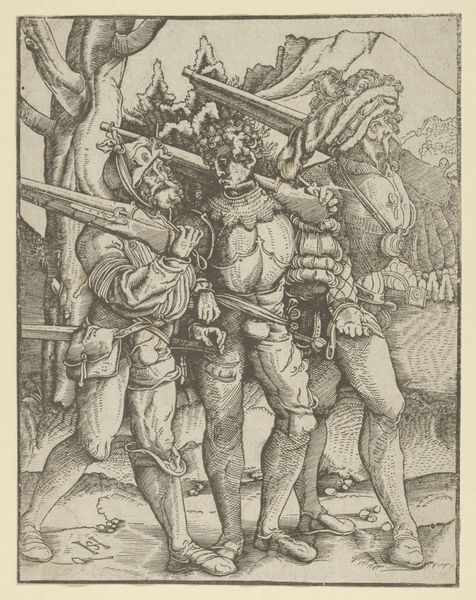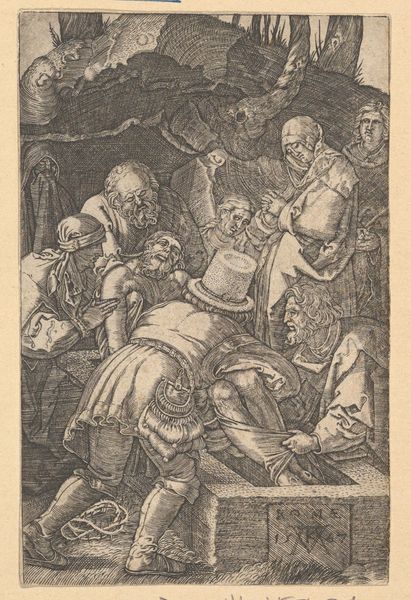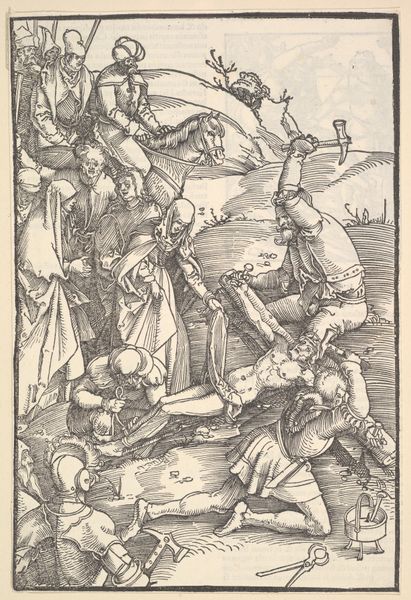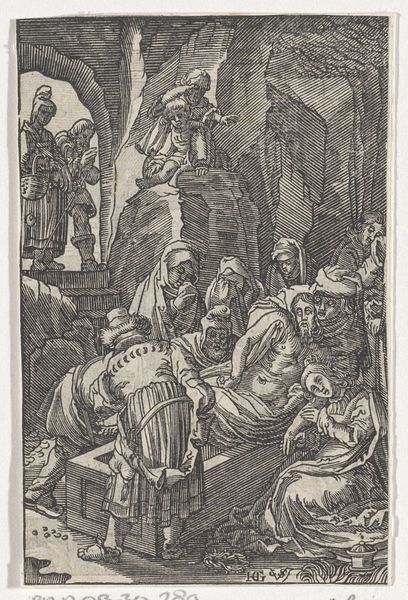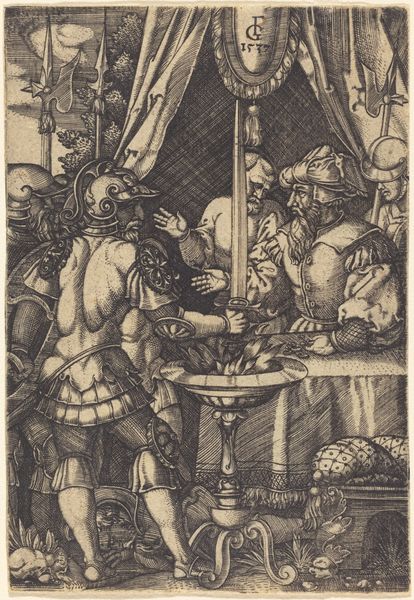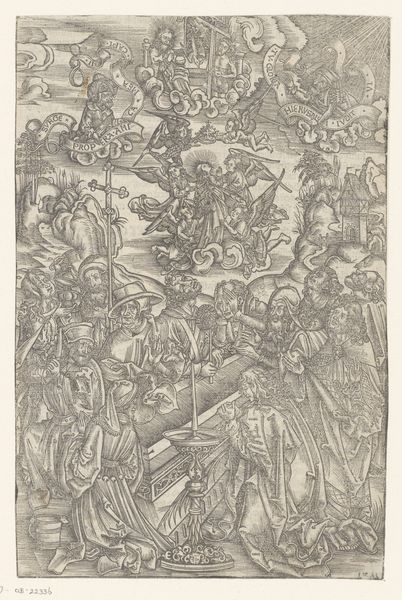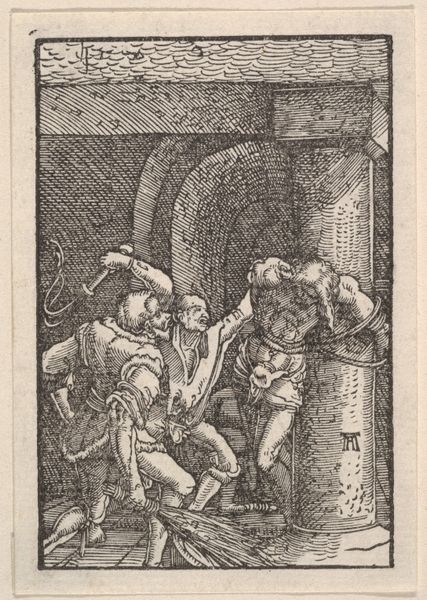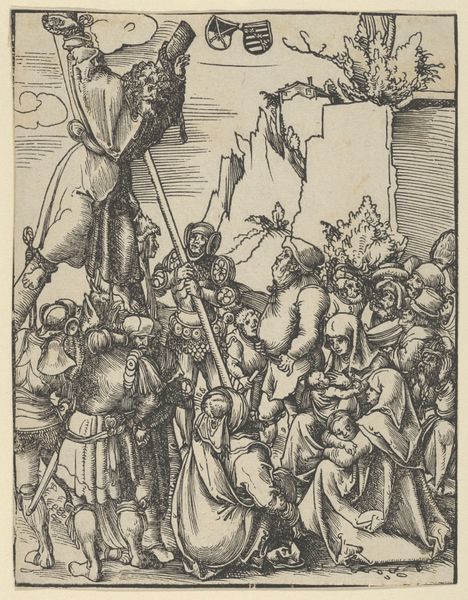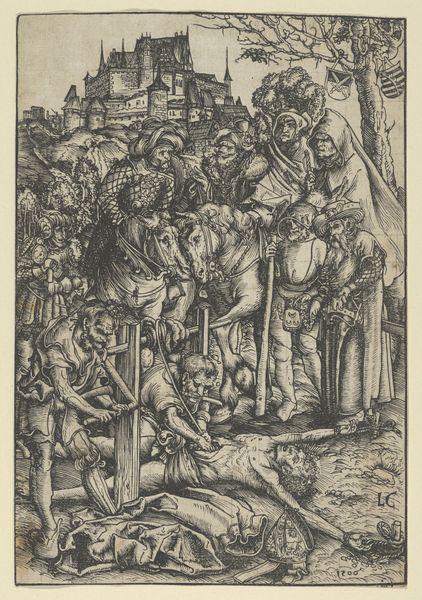
drawing, print, intaglio, engraving
#
drawing
#
narrative-art
# print
#
intaglio
#
figuration
#
line
#
history-painting
#
italian-renaissance
#
engraving
#
sword
Dimensions: Sheet: 4 5/8 × 3 1/8 in. (11.7 × 7.9 cm)
Copyright: Public Domain
Editor: Here we have Georg Pencz's engraving, "Mucius Scaevola and Porsenna, from 'Roman Heroes'," made in 1535. The scene is dominated by figures in classical garb, with one man stoically holding his hand over a flame. It feels incredibly staged, but the act is certainly dramatic. How do you interpret this work? Curator: This print throws light on the intersection of power, performativity, and sacrifice in 16th-century understandings of Roman history. Think about the context in which Pencz was creating this. The Reformation was challenging existing power structures. How might the story of Mucius Scaevola, who willingly sacrificed his hand to prove his loyalty to Rome, resonate in such a politically charged environment? Editor: So, you're suggesting that this image might be less about glorifying Rome and more about questioning authority? Curator: Precisely. Consider how Pencz visually positions Porsenna, the Etruscan king. Is he portrayed as a fearsome enemy or a figure of begrudging respect? The engraving could be interpreted as a commentary on the nature of leadership, bravery, and the justifications for violence. What do you observe about the relationship between power and vulnerability here? Editor: I see what you mean. Porsenna and his men are all armored, but it's Scaevola who holds the power by controlling his reaction to pain and showing that vulnerability does not equate weakness. Curator: Exactly. Pencz isn’t just illustrating a historical event; he’s engaging with the complexities of power dynamics and offering a lens through which to view contemporary social and political upheavals. And it raises difficult questions about whose stories get told, whose sacrifices are valorized, and at what cost. Editor: I hadn’t considered the piece as a commentary on the 16th century itself. It’s fascinating to see how historical narratives can be used to address present-day concerns.
Comments
No comments
Be the first to comment and join the conversation on the ultimate creative platform.
